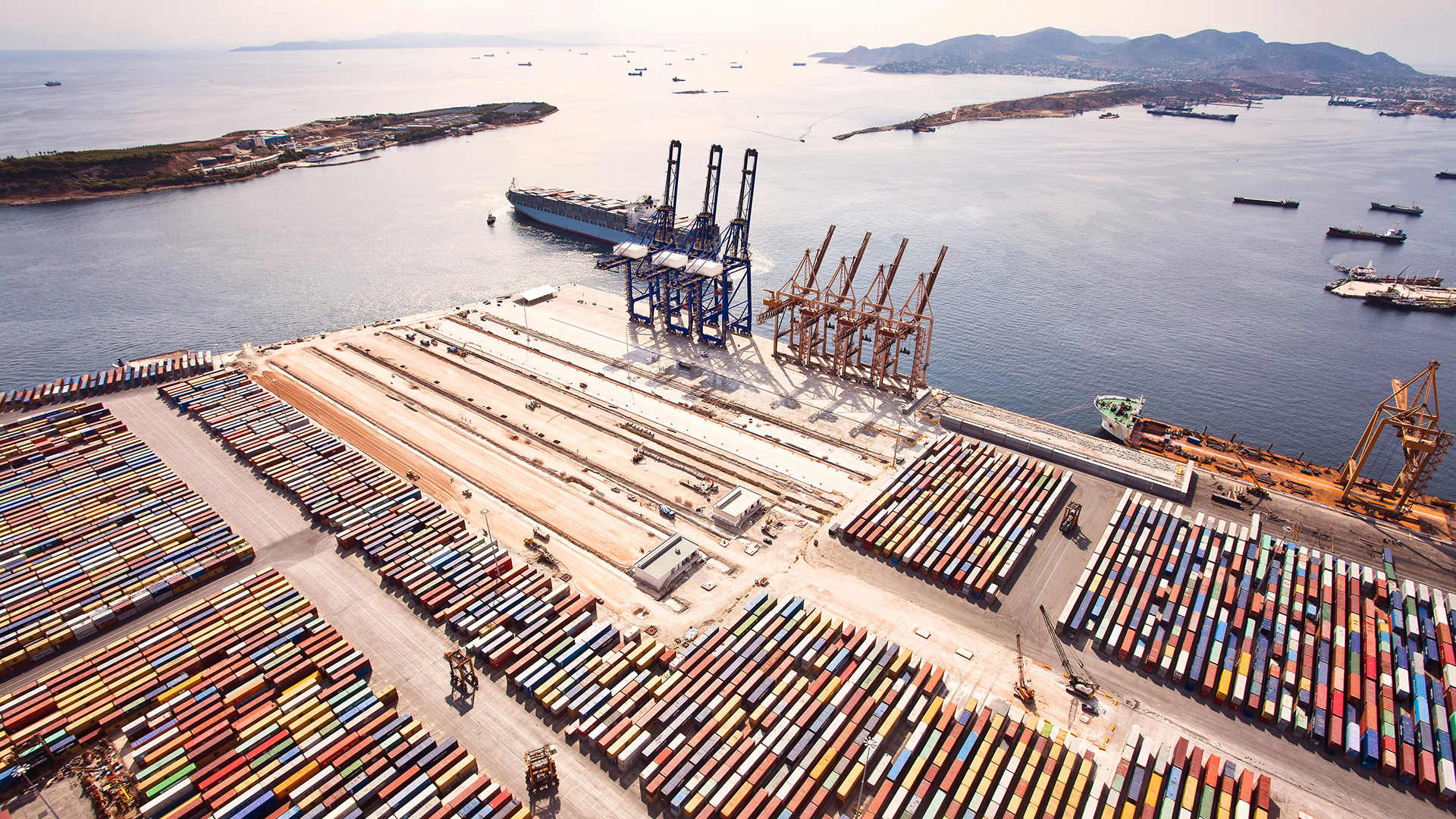English Supreme Court decision highlights challenges to watchkeepers and AI alike in dealing with conflicting Collision Regulations
The English Supreme Court of Appeal in its first decision in 45 years dealing with the International Regulations for the Prevention of Collisions at Sea 1972 (COLREGS) clarified the approach to be taken when two of the Rules imposed conflicting obligations on two vessels which were involved in a collision. The analysis of these two rules is of itself interesting and also highlights the complex and important decisions that watchkeepers currently have to make under huge time pressure. It also raises the question as to whether or not AI will be any better at reaching that decision correctly.
In overturning the trial court decision of Justice Teare and of the Court of Appeal, the Supreme Court in Evergreen Marine (UK) Limited vs Nautical Challenge Limited [2021] UKSC6, had to consider conflicting obligations under the Crossing Rules and the Narrow Channel Rule. Leaving aside special Rules relating to vessels unable to navigate freely and the obligations between, for example, power-driven and sailing vessels, the COLREGS overall structure places obligations on power-driven vessels to behave in a certain manner when a risk of collision exists.
The first set of these Rules are to be found in the Crossing Rules set out in COLREGS 15 to 17. These Rules apply where two power-driven vessels are crossing so as to involve a risk of collision. They require the vessel which has the other on her starboard side to keep out of the way (the “give-way vessel”) whilst the other vessel is required to keep her course and speed (the “stand-on vessel”). These Rules are designed to ensure that when two vessels are crossing and a risk of collision exists, both vessels can expect the other to behave in the required manner. The give-way vessel is obligated to take action to avoid the collision preferably by altering course to starboard which would be towards the stern of the crossing vessel or by slowing down or stopping to allow the crossing vessel to pass ahead. To ensure that these actions have the desired effect, the stand-on vessel is required to maintain her course and speed until the risk of collision no longer exists.
Although automatic radar plotting aids and automatic identification systems (AIS) have made it far easier for watchkeepers to monitor the actions of the other vessel, they have not changed the obligations on both watchkeepers to carefully monitor the relative movements of the two vessels to ensure that the action taken has the desired effect. The Crossing Rules are probably the Rules most given effect to in open waters.
Recognising that the Crossing Rules cannot always be complied with in confined waters, the COLREGS set out a different set of behavioural rules when vessels are navigating within a narrow channel such as the dredged or natural channel in the approaches to a Port. This is because a give-way vessel obliged by the Crossing Rules to alter course to starboard in a narrow channel may run aground once she leaves the channel. In brief, when navigating in a narrow channel, COLGREG 9 requires vessels to keep as far as is safely practical to the starboard side of the channel. Because they are proceeding on reciprocal courses but on the opposite sides of the channel, collisions should not occur. Vessels not using the narrow channel are obliged to avoid vessels in the narrow channel
In this case, the large container vessel mv Ever Smart was outbound in the dredged channel leaving Jebel Ali in the UAE. The VLCC Alexandra I was approaching that channel with the intention of berthing at Jebel Ali and was manouevering in the pilot boarding area to pick up the pilot once he left the mv Ever Smart. The vessels were monitoring one another’s respective movements and the watchkeeper, pilot and Master on the Ever Smart understood that the Alexandra I would not pass ahead of them in order to be able to approach the starboard side, inbound, of the channel.
Whilst manoeuvring at very low speeds off the channel, the Master on the Alexandra I heard an exchange between what he thought was the Ever Smart and Port Control telling that vessel to make sure that he passed astern of the Alexandra I. This was in fact an exchange with another vessel manoeuvring astern of the Alexandra I. A collision ensued a few hundred metres outside the entrance to the narrow channel.
Justice Teare in the trial court held that the Crossing Rules did not bind the Alexandra I when she approached the dredged channel leading to Jebel Ali and accordingly she was not under a duty to keep out of the way of the mv Ever Smart.
This decision was upheld by the Court of Appeal who also concluded that the Narrow Channel Rule applied in these circumstances to the exclusion of the Crossing Rules.
The first question the Supreme Court was asked to consider was whether the Crossing Rules are inapplicable where an outbound vessel is navigating within a narrow channel and has a vessel on her bow on a crossing course approaching the narrow channel with the intention of and in preparation for entering it. The second question was whether, in determining whether the Crossing Rules are applicable, there was a requirement for the putative give-way vessel to be on a steady course before the Crossing Rules are applicable.
The Supreme Court in answer to the second question held that neither the give-way vessel nor the stand-on vessel had to be on a steady course for the Crossing Rules to be engaged. When two vessels are crossing one another’s path, the simplest way of determining if there is a risk of collision is for each vessel to monitor the other to see if their relative angle or bearing to each other remains the same. If the relative bearing remains the same they will collide. Any change of the course they are steering will change the relative angle, but if both change courses at the same time they may remain on a steady bearing and accordingly at risk of collision. The Supreme Court accepted that two crossing vessels may be approaching each other and remain on a steady relative bearing which means there is a risk of collision, without either vessel being on a steady course.
Insofar as the first question was concerned the Supreme Court analysed various circumstances in which the crossing and Narrow Channel Rule would apply in the vicinity of an entrance to a channel. Three sets of circumstances were identified as follows:
- “Group 1 are vessels which are approaching the entrance of the channel, heading across it, on a route between start and finishing points unconnected with the narrow channel. They are approaching the entrance of the channel, but not intending or preparing to enter it at all.
- Group 2 are vessels which are intending to enter, and on their final approach to the entrance, adjusting their course to arrive at the starboard side of it.
- Group 3 are approaching vessels which are also intending or preparing to enter, but are waiting to enter rather than entering the channel.”
The Court held that the Crossing Rules would clearly apply to vessels in Group 1, but not to those in Group 2.
The facts of this case fall within Group 3 because the Alexandra I had not yet altered her course and speed to enter the narrow channel on her final approach. The Court held that the Crossing Rules should accordingly continue to apply to Group 3 waiting vessels or any vessel approaching the channel intending to enter it but which has yet to shape her course to enter it on her starboard side. Their final conclusion was as follows:
“Where an outbound vessel in a narrow channel is crossing with an approaching vessel so as to involve a risk of collision, the Crossing Rules are not overridden by the Narrow Channel Rule merely because the approaching vessel is intending and preparing to enter the narrow channel. The Crossing Rules are only overridden if and when the approaching vessel is shaping to enter, adjusting her course so as to reach the entrance on her starboard side of it, on her final approach.”
In the circumstances, the Supreme Court referred the matter back to Justice Teare to determine apportionment.
The analysis by the Supreme Court of the complex interaction between competing rules with the benefit of hindsight and the luxury of time has produced a carefully reasoned analysis of the interaction between the Crossing Rules and the Narrow Channel Rule. At the time of the events leading up to the collision, the Master and watchkeepers on both vessels had neither of these benefits. In addition to the pressures of navigating large vessels in confined waters in the approaches to a Port, they had to analyse other data such as the exchange between what the Alexandra I thought was the Ever Smart and Port Control, the instruction by Port Control to Alexandra I to approach buoy no. 1 which was on the port side of the channel and the fact that, as is common in many casualties, it was midnight. In addition to their navigational duties watchkeepers would have been planning for the handover of the watch at midnight and in the Alexandra I’s case, the prospect of entering a Port to load cargo and in the Ever Smart’s case, the prospect of proceeding to sea to commence passage to the next Port.
The decision, while providing clarity on the interaction of the Rules, highlights the pressures on watchkeepers having to make decisions under time pressure and in complicated circumstances.
No doubt an algorithm built into AI which will be making navigational decisions in the not too distant future could categorise the unfolding decision on each vessel between Group 1, 2 and 3 vessels as suggested by the Supreme Court. Such a complicated analysis is unlikely to be within the capabilities of the average watchkeeper under time pressure to make a decision. Whether watchkeeper or machine the decision still does not create absolute certainty as to exactly when the competing obligations under the two sets of Rules change when leaving or entering a narrow channel.
In addition the advantage of speed of calculation and lack of distractions enjoyed by an AI device would not assist in dealing with non-AI vessels, strange instructions from Port Control or confusing discussions with other vessels. AI may well reduce the risk of some collisions, but its current inability to ignore logic in favour of experienced discretion means that collisions in circumstances such as these are likely to remain a risk for decades to come.


